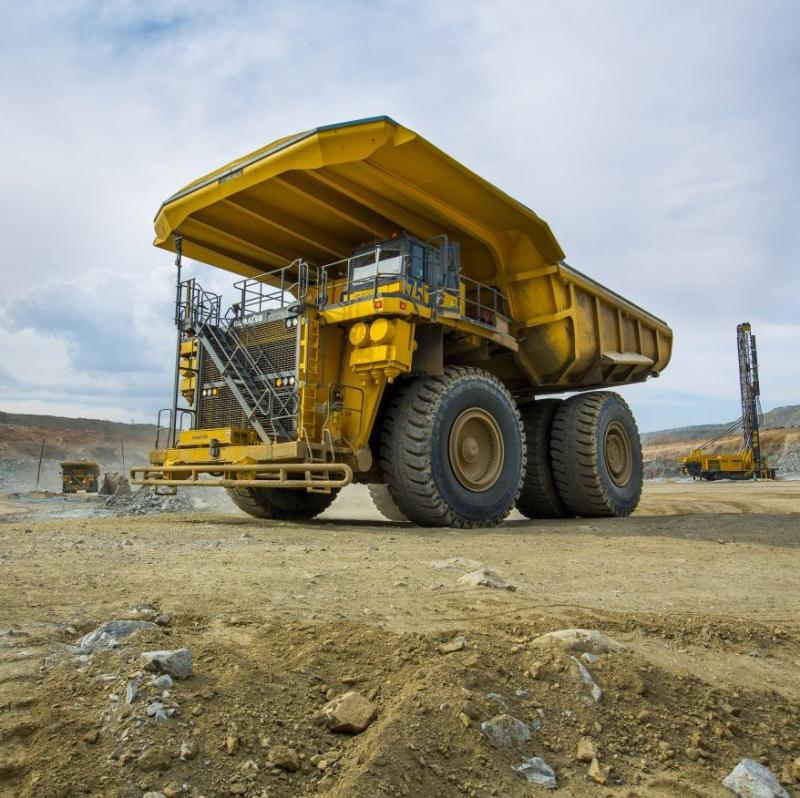This Mining Truck Will Be the World's Largest Electric Vehicle
By: Courtney Linder (Popular Mechanics)
While still a hybrid-electric truck, this machine is pretty impressive. The diesel engine is being replaced with a hydrogen fuel cell and a battery that can be recharged with regenerative braking. All these technologies have been around for almost a century.

The world's biggest electric vehicle—a 45-ton mining dump truck dubbed the eDumper—may have to cede its throne.
A hybrid newcomer, powered with both electricity and a reserve of hydrogen fuel, is on par to steal that title as the largest electric mining truck. The Fuel Cell Electric Vehicle will begin test runs at the Mogalakwena platinum group metals mining operation in South Africa later this year.
London-based Anglo American is developing the beast of a machine—it weighs 290 tons, or 580,000 pounds—as part of its sustainable mining vision. By 2030, Anglo American has committed to reducing global greenhouse gas emissions by 30 percent.
The conceptual work is done, but Williams Advanced Engineering, also based in the U.K., will bring the truck to life with a proprietary high voltage battery system for the truck, which is currently under development. The idea is to replace the vehicle's diesel engine with a retrofitted high-power modular lithium-ion battery.
"We are delighted to be involved in this innovative and exciting project which showcases the scalability of battery technology from automotive and motorsport to 'heavy duty' industrial applications," Craig Wilson, managing director of Williams Advanced Engineering, said in a prepared statement.
While the eDumper—a mining truck used to haul lime and marlstone from the sides of mountains in Switzerland—relies entirely on pure electricity and pure physics for power, the Anglo American truck will be a hybrid that uses both a lithium-ion battery and a hydrogen fuel cell module. Altogether, the truck will have over 1,000 Kilowatt-hours of energy storage.
Hydrogen fuel, according to the U.S. Department of Energy, is a clear fuel that produces only water as a byproduct when consumed in a fuel cell. It's typically produced from natural gas, nuclear power, or renewable wind and solar power. Supplementing the vehicle's battery with hydrogen fuel cells will allow the truck to run for longer periods of time without recharging.
There's also a third type of power that comes into play with the Fuel Cell Electric Vehicle: kinetic energy created through the process of regenerative braking.
When an electric vehicle—be it the Anglo American mining truck, the eDumper, or even your Tesla—rolls down a hill, that motion creates electrical energy for the battery as you brake. Thank the electric motors, which are serious workhorses. They power the car through the battery’s stored energy, but can also reverse to become mini generators that return some energy back to the battery.
When you accelerate, the battery powers electric motors inside that allow the wheels to spin and create forward motion. When you brake, the electric motors inside reverse direction to become generators. The motors harvest the kinetic, mechanical energy created by the car’s movement and transform it into electrical energy, which is then sent back to the battery and stored as potential energy for the next time you accelerate.
In cars with combustion engines, up to 70 percent of the kinetic energy created by moving downhill is lost as heat. That said, electric vehicles do lose some kinetic energy due to the movement of the machinery and heat loss, but regenerative braking is about 90 percent efficient, according to Tesla.
In the future, we’ll see regenerative braking in many more vehicles, according to Benoit Boulet, an associate professor at McGill University’s Department of Electrical and Computer Engineering in Montreal. While, say, watercraft might not be a good fit since there’s not a high level of friction for mechanical power transfer, electric snowmobiles could certainly benefit, he tells Popular Mechanics.
Regenerative braking also creates a more controllable braking experience, since positive torque at the wheels smoothly moves to negative torque. “Being an EV driver myself, I find that [regenerative] braking gives me more control and confidence when I drive on snow,” Boulet says.
After Anglo American finishes test trials with the Fuel Cell Electric Vehicle, the firm will conduct studies to understand how the truck's power units can be used to provide energy storage in second-life applications, like storing energy for the power grid.





At 290 tons with a full load, this is a heavy-duty truck.
Seems more practical than the other truck which has to rely on braking on a downhill grade with a heavy load to recharge the battery. This vehicle should be more efficient for strip or pit mining; and multiple short hauls over flat terrain.
Well, these trucks are usually specially designed for a specific mine. A lot of mining trucks are custom jobs even though they may look identical. For $3 or $4 million a pop (or more), the customer gets what they want.
I'm waiting to see if someone tries using the tipple to generate electricity.
Many mines are already using catenary systems where the trucks going downhill generate electricity via the brakes and the trucks going uphill can tap into that electricity to get up the steep slope in open mines.
This tech is great and all but I'm worried about the batteries. They don't last forever. They wear out. Eventually, most ground transport will be electric. There will be millions of worn out batteries I'm not convinced we have an adequate, environmentally sound method of disposing of or reclaiming.